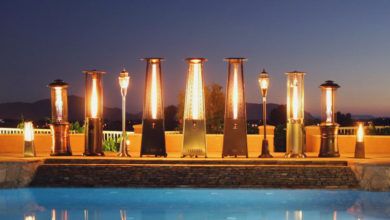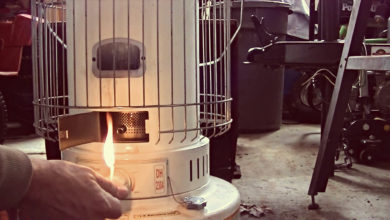Central heating involves generating heat in one place and distributing same to other areas through designated channels. A lot of questions have been asked about the efficacy of such a system. This is warranted considering it supplies heat to all areas including where such is not needed. For instance, your house has about 5 rooms with only two occupants and you depend on a central heating framework. How is that efficient? Sometimes, central heating might be the best for you. But understanding your options would help you choose a system which will keep you warm, and without the extra baggage of wastage to worry about. In this piece, we have looked at possible alternatives to the more renowned central heating approach.
A fireplace
What better way to stay warm than around a fire? If the structure of your home is convenient, a fireplace could be a viable option. You wouldn’t have to worry about huge energy costs associated with the central heating approach. Just gather enough dried woods, place such in the confinement of your fireplace and light them up! The only problem with this method of heating your home is that the heat delivered is limited to the area around the fireplace. Also, you need to concern yourself with not just collecting wood, but also the condition of your chimney.
Radiant Heating System
Unlike the central heating system which uses a conduit of pipes to deliver heat, the radiant system makes use of radiators. You can also use materials which conduct heat like metallic slates in the floors and ceilings of the different segments of your home. Just like the central heating system, this arrangement involves generating heat in one area and distributing same through another. But unlike the former, the radiant heating system uses water. Also, you get to control what area of your home is supplied with heat. Power could come from electricity, fossil fuel or other renewable energy sources depending on what you opt for.
Installation isn’t cheap. Add the energy cost of sustaining this warmth within the confines of your home and the financial outlay becomes substantial. You need to be aware of your budget before putting this system to use in your house.
Heat pumps
All heat pumps are supposed to do is just redistribute already generated heat. It should be easy right? Well, it is not. A heat pump transfers heat from external sources to the interior of your home. This arrangement might be expensive to set up but could be designed to heat and cool your home depending on the weather condition. There are two types of heat pumps: the air source heat pump and the ground source variety.
The air source type provides the needed heat from the air outside while the ground source heat pump supplies heat from the ground. The latter is also referred to as a geothermal heat pump and it is clearly more efficient compared to the air source type.
The efficiency of this system is much better than what is obtainable with a furnace which uses the central heating system approach. There is one significant drawback of heat pumps: they have to overcome an inertia observed when heat is moved through different regions. This is particularly evident in the geothermal variety which depends on obtaining heat from the ground. In fact, the entire exercise could end in futility if the nature of the soil in the concerned area does not meet the requirements.
While the attributes of these heating systems can affect your decision on what is good for your house, the structure of your home has a pivotal role to play in arriving at your chosen warmth provider. Below are some noteworthy points which could affect the efficiency of your heating system:
Insulation
Without an impermeable barrier, you will observe significant heat loss from your home. Your heating system will have to work twice as much if the inhabitants of your house are to feel warm during winter. Flawed windows can allow draught get into your house and this puts a strain on your heating system. The result is huge energy bills and certainly, you don’t want that. If you intend sticking to the popular central heating system, you will need to pay attention to the level of insulation available in the interior of your house.
Just how big is your house?
The answer to this question could enlighten you on the ideal heating system for your house. The size of your home could decide if the central heating system would be the perfect fit. If your house is big, this type of heating might be what you need. As previously stated, the central heating system uses ducts to deliver heat to every room in your house. If your household is small compared to the number of rooms available, the amount of heat expended is greater than what is needed. This leads to heat wastes and inefficiency. This is one of the major challenges facing the central heating system.
How is the heat delivered?
While generating the heat is important, its delivery is just as essential. The means through which this is achieved varies with the heating approach.
As previously reiterated, the central heating system uses ducts to deliver warmth. Leaks in such channels reduce the efficiency of the system. This often accounts for the huge energy bills observed by households using this method of heating.
A house which uses the radiant heating system does not have to depend on ducts or pipes. This eliminates issues associated with a flawed conduit. It does have its own issues. This system uses radiators which are prone to heat loss when they come in contact with a blast of cool air usually due to insulation problems.
There is no heating system with 100% efficiency. However, a flawless interior design will reduce heat loss significantly. Also, you need to be proactive regarding the performance of your heating system. There is no better way of showing intent than proper maintenance.





